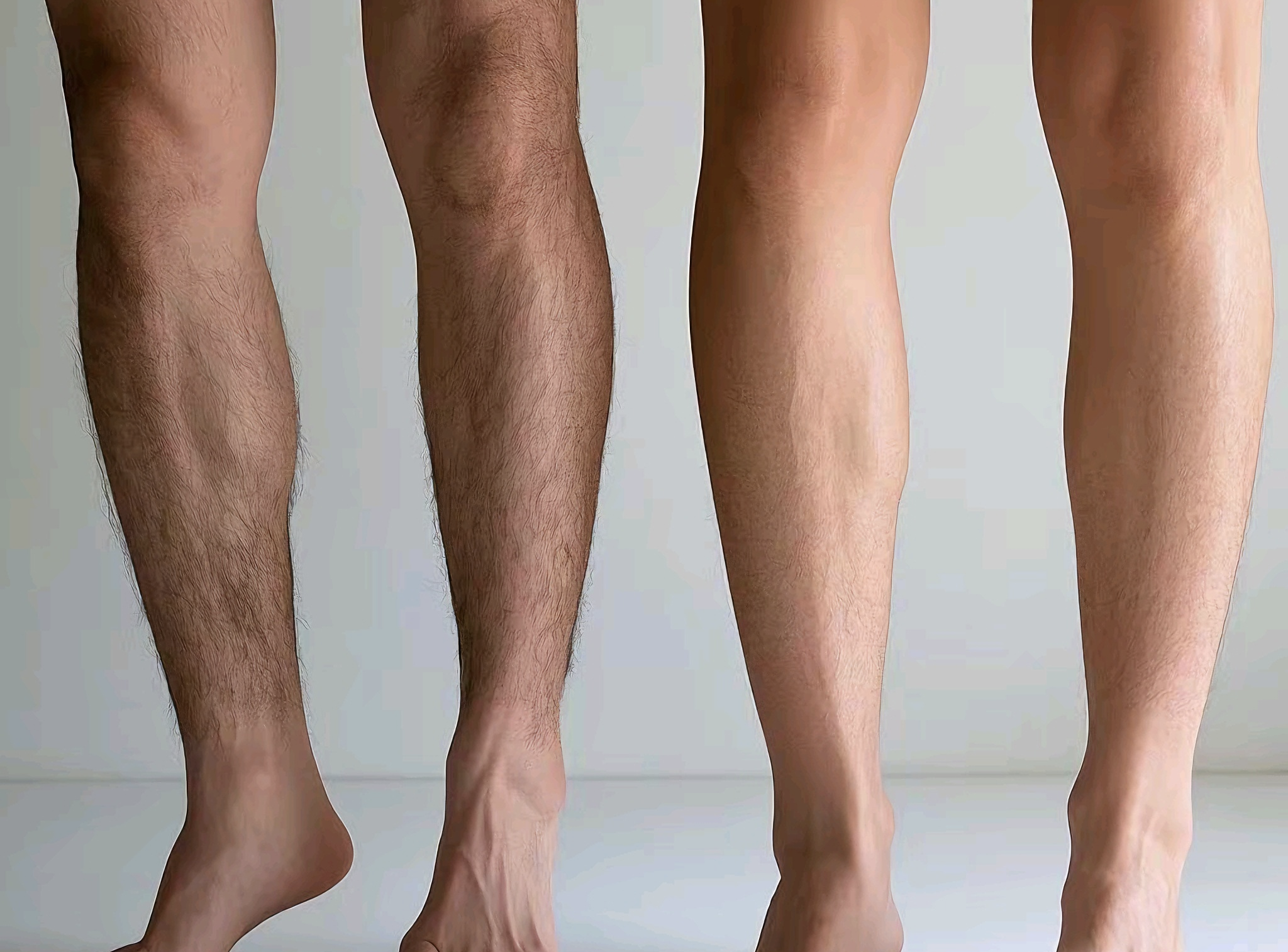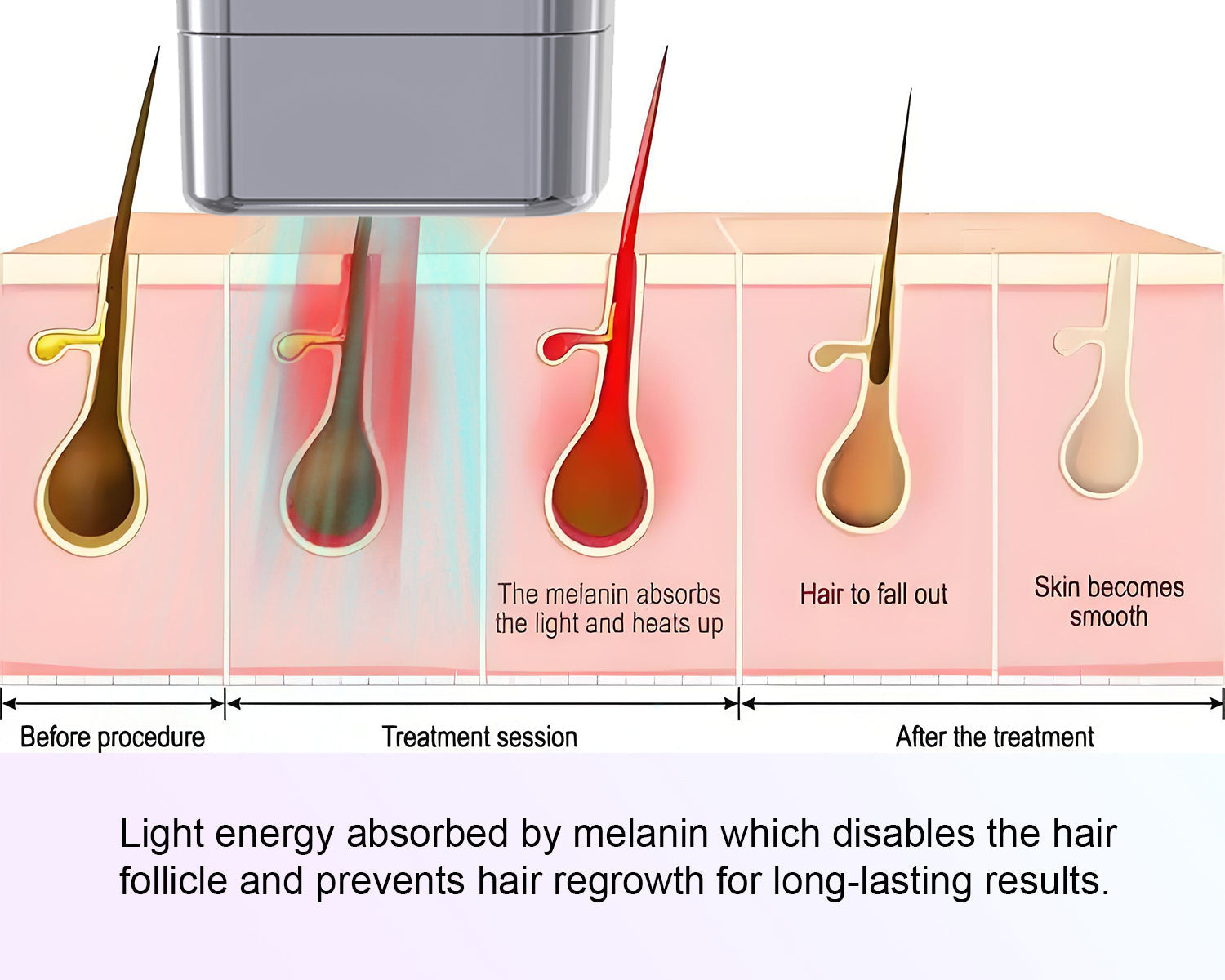“Is laser or IPL hair removal permanent? Can someone please give me a straight answer?” “How long do the results last?” These are questions we see repeatedly on social media, Reddit, and other platforms. To clarify, hair removal methods can be divided into two categories: temporary and long-term. Temporary methods require daily, weekly, or bi-weekly maintenance, while long-term or permanent solutions aim to reduce hair growth over an extended period—typically measured in months or years.
In this article, we’ll compare common hair removal methods, evaluating their longevity, effectiveness, drawbacks, and safety.
I. Short-Term/Temporary Methods
1. Shaving
• Best for: Quick, surface-level hair removal; ideal for pain-sensitive individuals or
temporary needs.
• Longevity: Results last 2–3 days.
• Drawbacks:
Ø Requires frequent use (every 2–3 days).
Ø Hair regrows quickly, often appearing thicker or darker.
Ø May cause razor bumps, irritation, or ingrown hairs.
• How to use: Shave on moistened skin, following the direction of hair growth. Avoid repeated scraping and apply moisturizer afterward.
2. Depilatory Creams
• Best for: Large areas like limbs or underarms; easy to apply.
• Mechanism: Chemicals (e.g., thioglycolic acid) break down hair keratin, dissolving the strands.
• Longevity: Results last 1–2 weeks.
• Drawbacks:
Ø Hair must regrow to a certain length before reapplication.
Ø Can cause skin irritation, especially for sensitive skin.
Ø Prolonged use may lead to side effects.
• Cautions: Always perform a patch test before use.
3. Waxing
• Best for: Large areas; removes hair from the root.
• Mechanism: Hair is “unplugged” from the follicles.
• Longevity: Results last 1–2 weeks.
• Drawbacks:
Ø Painful, especially for sensitive areas.
Ø Hair must regrow before re-waxing.
Ø May cause redness, irritation, or ingrown hairs.
• How to use: Typically done bi-weekly at home, in salons, or clinics.
II. Long-Term/Permanent Methods
First, let’s clarify what “permanent” means. According to FDA-cleared products, permanent hair removal refers to a steady reduction in hair growth over a prolonged period—not necessarily a lifetime guarantee. This “prolonged period” is typically measured at 3, 6, or 9 months.
1. Laser Hair Removal
• Mechanism: Laser targets melanin in hair follicles to inhibit regrowth.
• Longevity: Results last 1–5 years, depending on the individual. Most people experience 1–3 years of hair-free skin, some may see regrowth in 5 years. Any regrowth is typically finer, thinner, and less dense. Maintenance treatments can address this.
• How to use: Requires 4–6 sessions at a clinic, spaced one month apart. Full treatment takes 4–6 months.
• Pros: Precise, effective for thick hair, and causes minimal skin damage.
• Best for: Individuals with lighter skin tones and darker, thicker hair. The best longevity.
• Drawbacks:
Ø Must be performed by professionals; not suitable for at-home use.
Ø May cause temporary redness or sensitivity.
Ø The most expensive.
2. Cool-Touch IPL (At-Home or Clinical)
• Mechanism: Uses intense pulsed light (IPL) combined with cooling technology to destroy hair follicles with minimal discomfort.
• Longevity: Results last 1–3 years. Regrowth is finer, thinner, and less dense. Maintenance treatments can extend results. Second best in terms of longevity.
• How to use: Requires 2 sessions per week. Full treatment typically takes 2 months (8 weeks), or monthly treatment for the third month.
• Pros:
Ø More comfortable than laser.
Ø Suitable for at-home use.
Ø Maintenance treatments are free if you own the device and have remaining flashes.
• Comparison to Laser:
Ø IPL requires more frequent sessions (2x per week vs. laser’s 1x per month).
Ø However, full treatment is completed faster (2–3 months for IPL vs. 4–6 months for laser).
Key Notes
• Aftercare: Avoid sun exposure, hot water, and harsh products post-treatment. Use aloe vera or calming creams to soothe the skin.
• Avoid: Frequent waxing or tweezing, as these can cause folliculitis or ingrown hairs.
• Choosing the Right Method: Consider your hair and skin type, budget, pain tolerance, and any medical conditions before deciding.



